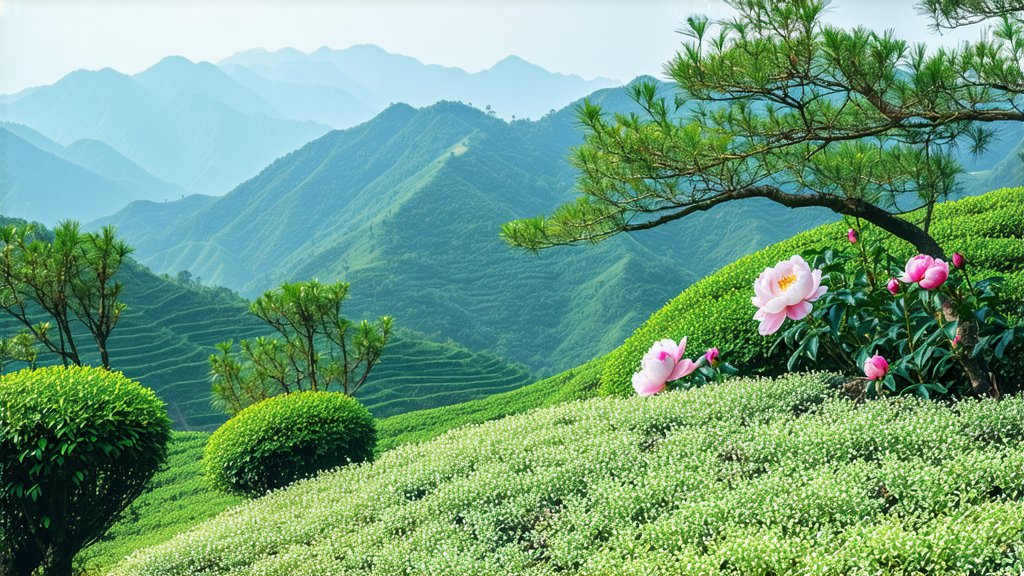
Nestled within the lush landscapes of China's Fujian province lies a gem among the world's teas – Bai Mudan, or White Peony Tea. This exquisite白茶 (Bai Cha), meaning "white tea," is not only a testament to nature's purity but also an emblematic representation of Chinese tea culture's depth and sophistication. As we embark on this journey, let us delve into the history, varieties, meticulous crafting process, and the art of appreciating this delicate brew that has captivated palates globally.
A Glimpse into History
The origins of White Peony Tea can be traced back over 200 years to the Qing Dynasty, during which it was primarily produced for the imperial court. Its name, 'Bai Mudan,' translates to 'White Peony,' referencing the tea's resemblance to the delicate petals of the peony flower when infused. This tea gained prominence due to its unique flavor profile and the meticulous care taken in its production, making it a symbol of luxury and refinement.
Varieties and Classification
White Peony falls under the broader category of白茶 (Bai Cha), which includes other esteemed varieties such as Bai Hao Yinzhen (Silver Needle) and Gong Mei. Unlike green or black teas that undergo extensive oxidation, white teas are minimally processed, allowing them to retain their natural properties and subtle flavors. Bai Mudan specifically consists of young shoots and partially opened leaves, typically harvested in early spring when the first flush of growth offers the finest quality.
The Artistry of Crafting
The creation of White Peony Tea is an art form that requires precision, patience, and respect for tradition. The process begins with the careful handpicking of tea buds and leaves, usually done in the misty morning hours to preserve freshness. These are then spread out thinly on bamboo mats to wither naturally under the sun or in shaded areas, a step crucial for reducing moisture content and enhancing the tea's natural sweetness.
Following withering, the leaves undergo a gentle oxidation process, where they are left to rest, allowing enzymes to break down complex molecules into simpler ones, contributing to the tea's distinctive aroma and taste. This phase is closely monitored to prevent over-oxidation, preserving the tea's signature lightness.
Once adequately oxidized, the leaves are lightly baked to halt further chemical changes while still maintaining their crisp texture and vibrant color. Finally, the dried tea is sorted meticulously to ensure uniformity and remove any imperfections, resulting in the pristine appearance that Bai Mudan is renowned for.
The Art of Appreciation
To truly savor White Peony Tea is to engage in a sensory exploration that transcends mere consumption. The ritual begins with selecting a transparent glass or a Gaiwan (a traditional Chinese teapot without a handle), allowing one to admire the tea's graceful unfurling dance as it steeps.
For a standard serving, approximately 5 grams of tea per 200ml of water is recommended. The water temperature should be around 80-85°C (176-185°F), slightly cooler than boiling, to gently extract the tea's essence without scalding the delicate leaves. A short infusion time of about 1-3 minutes is ideal for the first brew, with subsequent infusions gradually increasing in duration to reveal different flavor dimensions.
As the tea steeps, one can observe its transformation from a pale yellow-green hue to a golden amber, indicative of its rich content of antioxidants and polyphenols. Upon sipping, the initial impression is often a delicate sweetness reminiscent of fresh hay or honey, followed by a subtle floral note that lingers on the palate. The finish is clean and refreshing, leaving a lingering aftertaste that invites contemplation.
Health Benefits and Cultural Significance
Beyond its aesthetic pleasures, White Peony Tea boasts numerous health benefits. Rich in catechins and flavonoids, it is reputed to boost the immune system, promote cardiovascular health, and aid in weight management. Its high antioxidant content also contributes to skin health and may help slow down the aging process.
In Chinese culture, tea is more than just a beverage; it is a medium for social interaction, philosophical reflection, and even artistic expression. The preparation and sharing of White Peony Tea embody these values, fostering a sense of community and mindfulness. It is often said that every cup tells a story, connecting drinkers across time and space to the ancient traditions that continue to shape our understanding of this remarkable leaf.
In conclusion, the allure of White Peony Tea lies not only in its exquisite taste and aroma but also in its rich cultural heritage and the meticulous craftsmanship involved in its production. As we raise our cups to this ethereal elixir, we partake in a centuries-old tradition that celebrates harmony between humanity and nature, a reminder of the simple yet profound joy found in a well-brewed cup of tea.